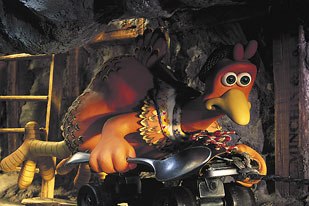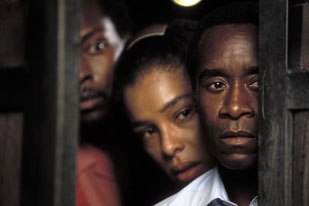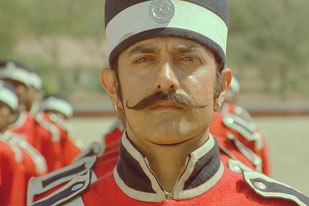Is Digital Intermediate evolving from a post-production facilitator into a creative force of its own? Janet Hetherington chats with industry experts about how DI is transforming the industry.

With DI, advancements include input as well as output. Panavisions new Genesis digital imaging camera is currently being used on Superman Returns. Courtesy of Warner Bros.
A trip to the movies means seeing the latest feature film, with film being the operative word. Today, however, the film used to shoot the latest Hollywood blockbuster or animated feature likely has been massaged using Digital Intermediate, or DI a facilitator that is rapidly becoming a routine part of the post-production stage.
DI uses digital processes to perform editing, grading, text, visual effects and more, generating a digital master ready for various distribution and delivery processes.
DI as a process has the potential to allow visual storytellers to bring their imaginations to life, suggests Lou Levinson, senior colorist, Post Logic Studios. From capture to output, anything becomes possible.
DI in the sense of film to digits to film has been around quite awhile for visual effects shots and CG sequences, Levinson continues. Its impact on production has increased as technology has allowed for greater data storage and manipulation. DI, as we now commonly use it, refers to entire movies and visual stories being manipulated digitally in various ways, shapes and forms, between capture and output.
However, that doesnt necessarily mean that DI, as an enabler for fixing it in post, is always the best way to deal with issues arising from production. There will still be things better done in camera, real or virtual, but the possibilities are becoming endless, Levinson adds.

Steve Chapman of FilmLight thinks that DI is transforming the industry as the whole production process turns digital.
Steve Chapman, director of FilmLight, a U.K.-based specialist in the field, agrees that DI is transforming the industry. From a technical standpoint, its very similar to what happened to video post-production in the late 1980s, when suddenly the whole production process went digital, Chapman says. From the creative perspective, I would hope its further enabling the director of photography (DP) and the director to create beautiful images, without the enormous pressure of having to capture it all completely in camera.
DI World
DI appears to be the newest darling of U.S. filmmakers, but it is also having an impact around the world. DI may well be growing fastest here in Hollywood as there are several studios who are mandating a 4K DI for all new product, Levinson suggests. The capacity in this town will have to expand dramatically to meet these needs. Also, I would imagine that India and China will be moving seriously into these realms, if theyre not doing it already.
Chapman sees growing demand for DI in London, followed by L.A. However, weve a number of systems in Moscow, Korea, Thailand, etc. It appears, all the domestic film industries are going through this change at the same time, he says.
Kevin Phelan, head of post-production at Lip Sync Post, comments, The U.K. has seen rapid growth in the last three years. Other European countries like France, which has a strong history of excellent digital FX for film along with the U.K. and the U.S., Germany, Italy, etc. Scandinavia has long been represented, particularly by DFL, which was maybe the first to do a complete DI via a Datacine device.
DI Evolution
Phelan recalls that DI saw its beginnings with the introduction of Datacine devices such as the Spirit from Thomson. A lot of films around the world were being put together with a large amount of vfx shots or sequences graded to an x degree, then cut traditionally via neg-cutting and then final grade applied traditionally at the film laboratory.
Instead of using a telecine device to go onto PAL or NTSC broadcast quality videotapes, the DATA heads on telecine devices could and can capture more information: resolution (i.e., how sharp or detailed an image is) and also latitude (the brighter whites and the darker blacks and more of the nuances in between), and saved this information as DATA as opposed to video signals.
Phelan says that the other side of DI was for those companies who wanted to use real scanning devices that work somewhat slower using pin-registered gates and over-sample the image being presented to them. Or in some opinions, capture film resolution at its real definition/resolution without the need for processing under the bonnet, Phelan observes.
Phelan adds, There is an intermediate intermediate that has achieved great results going from film negative (35mm, 16mm) and mix-n-matching with possible tape formats, i.e., HD-Cam, DV etc. and resulting on HD-D5 (or similar tape format) such as the multiple award-winning Touching the Void so this is to be considered a variant, but member of the DI family.

Chapman recalls that there was a long learning curve with DI on Aardman Animations Chicken Run in 2000. © DreamWorks Pictures.
Learning Curve
Chapman remembers learning to work with DI on the fly with animated chickens trying to fly.
The first project was Chicken Run for Aardman Animation, released in 2000, Chapman recalls. It was a long learning exercise for everyone. This had specific issues with the film stock changing its response over the long time it was in a stop-frame animation camera, and with the number of neg cuts from cut-backs, which a traditional process would have required. Fortunately, the timescale of stop-frame allowed us to develop what would now be called a DI process on the job.
The film, I think in the end looked wonderful, but we learned a lot about representation of color on different display devices on the way, Chapman says. I dont think you could have chosen a much wider selection of shades than is used in this project its like looking into a plasticine box.
Phelan recalls that, after a good few years of research, Lip Sync Posts first DI effort was a feature called Creep. This was shot 3 perf 35mm, framed for 2.39:1 projection (often commonly referred to as 2.35:1) aspect ratio and was scanned on our pin-registered 6k Northlight scanners, with 4 frame handles approximately 1,500 shots, then conformed in our first iQ from Quantel using its qColor grading tools, adding in vfx shots from outside and inside the building, he says.
Calibration for our first suite after evaluation of the limited devices on the market was provided by FilmLights Truelight devices, which basically emulate negative film-recording stocks and subsequent film-print stock characteristics, printed to rigid control parameters, Phelan continues. Likewise, for future deliverables for HD masters and subsequent PAL/NTSC masters the calibration tools come into play.
Meanwhile, Prime Focus India Private Ltd. has been doing DI work since 2001, but since then has evolved from visual effects sequences to entire movies. Currently, Prime Focus is the DI specialist for Bollywood films. In 2003, we completed the first entirely color graded film in India, Qayamat, recalls Rohan Desai, DI supervisor, Prime Focus. Over the years, since then we have completed 37 entire DI film projects, with each film duration averaging to 2 hours, 45 minutes.
Post Logic Studios Lou Levinson offers, It was not our first DI, but our work on Hotel Rwanda is a perfect example of how color correction, Power Windows and re-composition of the frame can be used to enhance not only image quality, but emotional nuance and dramatic impact.

Kevin Phelan of Lip Sync Post has seen a rapid growth in DI use in the U.K. the last three years.
Color My World
Color and visual presentation are areas where DI enjoys key impact. Veteran colorist and DI pioneer Peter Doyle, who worked on providing distinct visual identities to The Lord of the Rings trilogy, The Matrix and the latest two Harry Potter films, acted as supervising digital colorist on Tim Burtons Charlie and the Chocolate Factory.
When asked how DI has changed over the years, Doyle replies, In some ways you should ask what has not changed! There is a lack of understanding of color management and the quality that film print can actually give you, as well as a lack of respect for the director of photographys creative intent.
Clearly, more companies are getting into the business. The sales pitches presented by these newer companies tend to confuse producers and directors. Due to lack of experience, these companies are consistently creating unrealistic expectations, Doyle insists.
Those expectations may stem from all that DI is able to achieve. Doyle notes that a film can now be available for digital cinema or HD even before mechanical prints are made. A director has the opportunity to present the film live, and then receive and apply feedback from the presentation. The director can present the film at its absolute best quality and make changes to it within hours somewhat like a live broadcast. The DI can be compared to a big grading room with the right tools, letting the project evolve with a sense of spontaneity.
Not surprisingly, at Londons Moving Picture Co. (MPC), DI was deemed a natural on Tim Burtons Corpse Bride, the first stop-motion animated feature to be shot digitally. MPC was already committed to undertaking around 460 vfx shots, when DI colorist Max Horton was consulted as to how the material originating from digital stills would look when graded and shot to film. In the summer of 2004, we set about using a Quantel IQ system to grade test sequences, these were then shot back to film on an Arri laser film recorder and [we] evaluated the results in our cinema, Horton explains.

Post Logic Studios work on Hotel Rwanda is a perfect example of how color correction, Power Windows and frame re-composition enhances image quality and emotional nuance. Courtesy of MGM/UA.
Later in the summer the cinematographer Pete Kozachik kindly arranged for me to visit the shoot to visually reference the contrast and tone used on the sets and characters. For Corpse Bride, the brief started simple with two distinct worlds, one full of rich color and one with very little, and the sets were painted and lit to reflect this. On reaching the DI the low color world was further reduced to almost monochrome; however, a few set features and scenes had their color enhanced to provide a counterpoint to this look. In the high color world, the contrast and color were increased in most scenes, but, again, when the pace of the action dropped, large areas of more pastel tones were used. Most of the colors used were reflections of those that were there when the film was shot and were the choice of the filmmakers.
Lip Sync Posts Phelan further explains, Now you can see it in realtime and tweak if need be, then commit to film, or some variant of data. For instance, if a sky was looking strange, or out of context with the rest of the image (or vice versa), one could isolate that sky, or that balloon, or eyeball or finite part of that eyeball. This would be harder to do traditionally and be a lot more time-consuming.
Adding to a demanding arena of different media, a hectic vfx content on many films, and the fact that the markets for films after the initial theatrical release of a feature film demand (or should demand) stricter control of what the film looks like across the board, then DI assists beyond belief in making sure that the film print, the Digital projection masters, HD masters and so on are absolutely perfect.
As ever in film production, given a tool kit, people are pushing what is possible here, combining techniques from digital emulation, tradition lab processes with the full complexity of a special effects compositing system, says FilmLights Chapman. Weve certainly seen shots with over a 100 layers in, which still retain the look of a special moment photographed for real.
Our DI work flow is pretty flexible in terms of designing for an individual film, offers Desai of Prime Focus, which provided DI for Indias newest and most expensive film, Mangal Pandey The Rising. Our approach for each film will be determined by various factors, like the deliverables, the edit of the film, the time frame scheduled for delivery and the creative experimentation and research required for each project.

Veteran colorist and DI pioneer Peter Doyle fears that due to lack of experience, companies are consistently creating unrealistic DI expectations with sales pitches that confuse producers and directors.
Since the film is a period film, the brief was to try and create a look to enhance the rustic feel of the era, Desai says. It was our challenge to achieve the true projection of a raw and rich India in the 1850s.
DI offered delivery as well as visual opportunities. The Rising is a bilingual release to be released simultaneously as separate films in both English and Hindi. The two films have different edits, so effectively it was almost like two films were to be delivered concurrently, Desai continues. The delivery included six master negatives for a worldwide release, which included clean and subtitled negatives for both the English and Hindi film.
The film with its logistics having two films for simultaneous release with common shots in both the films, the vast number of visual effects shots and the fact that they needed the look to support the era of Mangal Pandey made the DI process extremely essential for the film. Another big flexibility for the director of photography was the fact that he could shoot the film with the super 35 format, enabling him to use a lot of different lenses, and we believe sharper images in this part of the world.
Tools of the Trade
Prime Focus has been keeping pace with the latest DI technology. We started with the traditional telecine grading process, grading on a Spirit datacine with a Pogle Megadef color corrector, Desai says. Our facility has gone through several changes, and today boasts of a full-fledged state of the art facility consisting of a Spirit 4K, four Lustre Systems, two Arri lasers and one Celco fury film recorder.
We further strengthened our position in 2004, with a strategic tie up with Adlabs, Indias biggest film processing lab, Desai continues. As a result of this tie-up, we have now set up our entire DI facility inside the lab premises. This further helps us in maintaining our strict quality checks by having the grading systems and the print checks in the same premises.

Prime Focus India provided DI for Mangal Pandey The Rising. The films bilingual release, the many vfx shots and the period look made the DI process essential for the film. © 2005, Yash Raj Films Pvt. Ltd. Courtesy of Prime Fo
Colorist guru Doyle confirms that DI advancements continue to be used in his work, including more image processing, implementation of video style algorithms into software, e.g. noise reduction. Doyle notes, [Because of] a significant increase in the degree of image processing applied to the principal cast, some films are borderline cosmetic style posters.
With DI, advancements include input as well as output. For instance, Panavisions new Genesis digital imaging camera the first of its kind boasting film-like quality is currently being used on Superman Returns and a handful of other features.
As far as working in this digital realm with vfx in mind, I see Genesis as an excellent instrument for recording the light in a scene, suggests Scott E. Anderson, visual effects supervisor and president of Digital Sandbox, a consultant on Superman Returns. While film interprets a scene, Genesis records a more neutral view of the world, leaving the look to our interpretation in DI or vfx.
Thus, as Peter Plantec concludes in his recent Digital Eye column, the Genesis offers a DO or Digital Original.
New tools for all aspects of DI are hitting so often Im not always sure I can keep up, notes Post Logic Studios Levinson. But we have a great engineering team here to track those developments. Because scanning and film out require heavy metal, they dont change as quickly, but the trend for change for other tools, being software-based, can be almost weekly. As every facility has a different concept of what their internal workflow will be, what tools they use will be dependent on that outlook.
Creatively, DI is still in its infancy, Levinson continues. When we see projects that mix everything from phone cams to CGI to 65mm with a wide variety of looks, were getting somewhere. When its used as a tool for pre-visualization, for example, to render perhaps how a colorblind person sees the world, then we are truly beginning to utilize DI in all of its creative range. If you can imagine it, you can put that world on the screen.
We are headed towards a technology that can truly encompass all the resolution, dynamic range and tonalities of our primary image capture platform, film, in a truly transparent fashion. And maybe, soon begin to replace film as a capture medium with an electronic one with all the range of film and more. However, Levinson adds, get it onto film if you want to see it 100 years from now.

For Corpse Bride, DI colorist Max Horton reduced the low-color world to almost monochrome (left), and increased the contrast and color in most of the high-color world scenes. Corpse Bride images courtesy of Warner Bros. Pictures.
Creatively it should be used as a very worthwhile tool for the director of photographys palette challenging looks for the right reasons using artistry is called painting, comments Lip Sync Posts Phelan. In a market-driven world one could easily just go for a known funky look, but not all audiences are that naïve, so judgment has to prevail. Would one rather see Van Gogh on a postage stamp or a bigger canvas? Or would you look at Van Gogh through rose-tinted glasses and say, Thats art?
As for advancing DI technology, Phelan says, It would be nice to go 4K and or above, when processors are faster and in the meantime production to bear that in mind for costs and the time for the scanning, grading, rendering, film-recording timescales, etc. will be longer.
Growing Pains
DI is becoming an industry standard with the usual growing pains. Its an age-old problem. Standards should be encouraged, taught and adhered to, and not become a manufacturers licensing or equipment playground, Phelan adds. Its expensive to start off with as a facility, but it will come down in time. Staff need to understand the creative demands and the workflow demands, but in a computer literate world, that shouldnt be a problem. Still, artistry shouldnt ever be undermined.
Its getting there, but theres still a lot of holes in the process, admits Chapman. Sometimes it still looks like a 700 shot [visual] effects project.
The challenge as we move into a world of DI as the standard is two-fold, comments Post Logic Studios Levinson. Are we using these technologies and processes wisely and are we getting to an economic model that makes sense? An example of what I mean about wise use does the negative created through a 2K pipeline represent the ultimate archive, or should time and money be spent cutting negative and archiving that as well?
While DI is replacing the traditional chemical finish in many instances, the economic models dont always make sense, Levinson observes. One thing a facility has to remember is that DI generally involves the chaos that is film post-production, which may be a different and more intense chaos than what theyve been used to. Add to that a production company that may have skimped by not having a post supervisor and you have a recipe for nightmares. DI requires an enormous investment in gear and people, a serious learning curve and a long-term commitment to the work.
Existing mastering facilities are evolving to apply what theyve learned over the years to film resolution images at the same time as a new group of revolutionary facilities are expanding vfx/CGI techniques to feature-length projects, Levinson says. The real scramble is to get the work as far upstream into the production process as possible in the hopes of garnering all the downstream work as well.
Clear DIrection
Doyle certainly has a clear vision of where DI is headed, suggesting that DI will split into four services:
-
A facility that is DP friendly, is very film and lab orientated and understands how to work within the director/director of photography relationship.
-
A facility that is very director friendly, in the style of a commercial telecine house.
-
Stand-alone department set up within the production, outsourcing what ever is not practical e.g., scanning/recording (Doyles focus).
- A grading room running with several operators/graders matching colors set by a color designer and director/DP. (Sometimes, the grades are so complicated they are effectively vfx, and, as such, need the time to craft each shot, Doyle remarks.)
The primary reason for any film to go through the DI process will always be the power to control shadows, mids and highlight areas separately, in addition to being able to grade different parts of the frame separately with the help of secondaries acting as the additional lighting tool for the director of photography, says Prime Focus Desai. The fact that you will end up with a cleaner, joint free, digitally color enhanced negative will excite any director and director of photography conscious enough to achieve that extra with his product.
For myself, I think its heading toward a film finishing stage, concludes Chapman. Perhaps the term DI will fall into disuse a place where the director can sit and finally bring his project together in a screening theater, with all the tools quickly available to try different approaches.
Janet Hetherington is a freelance writer and cartoonist based in Ottawa, Canada, where she shares a studio with artist Ronn Sutton and a ginger cat, Heidi.







